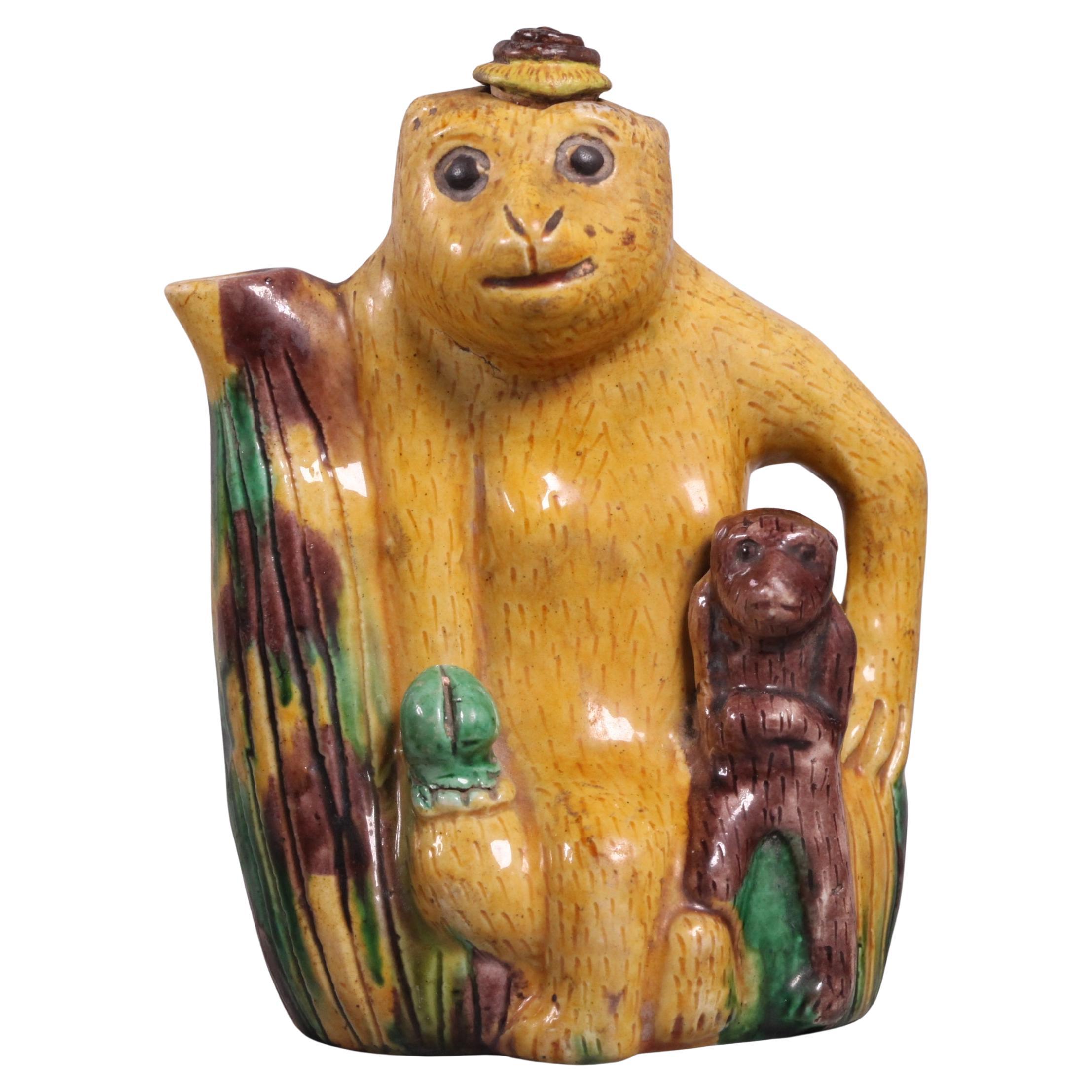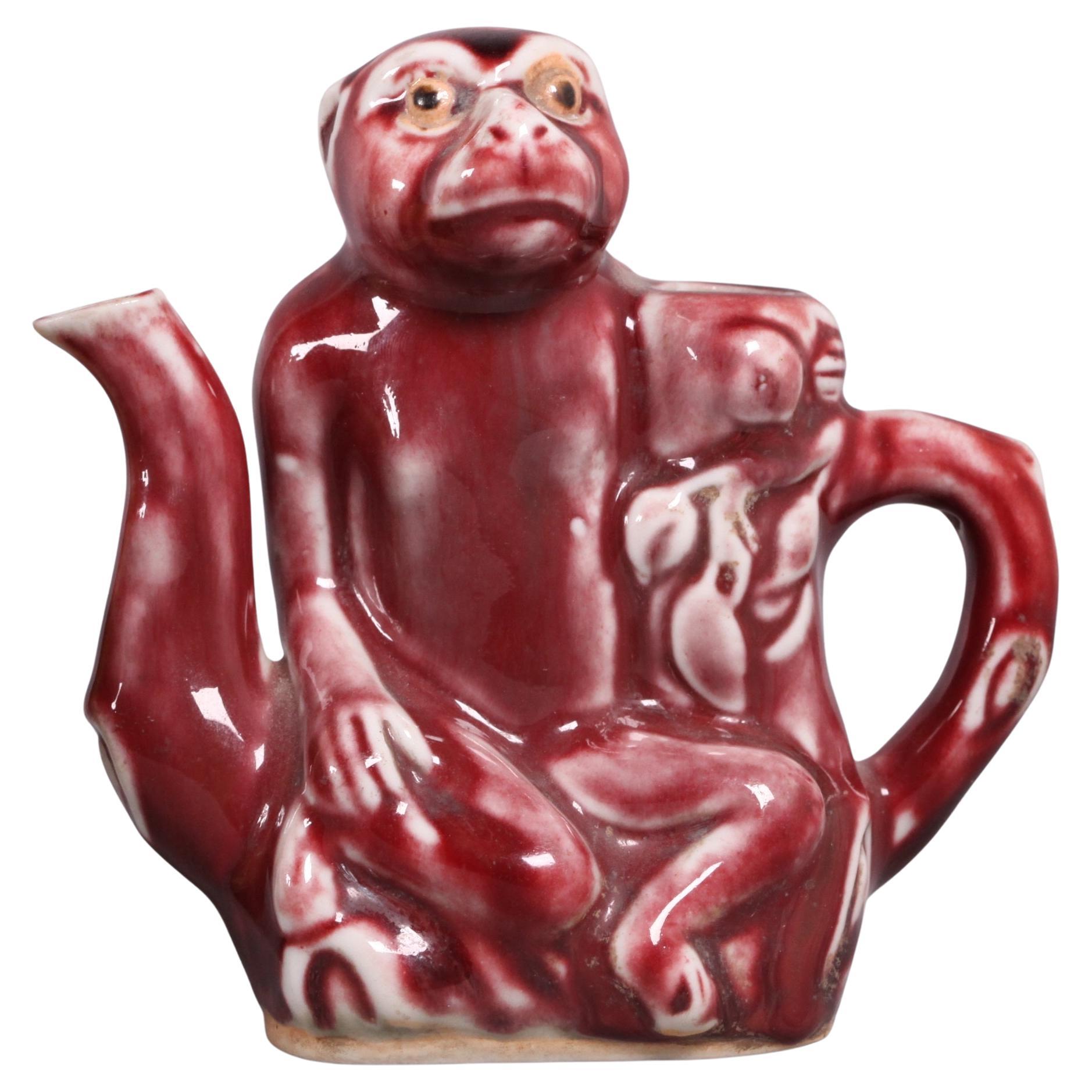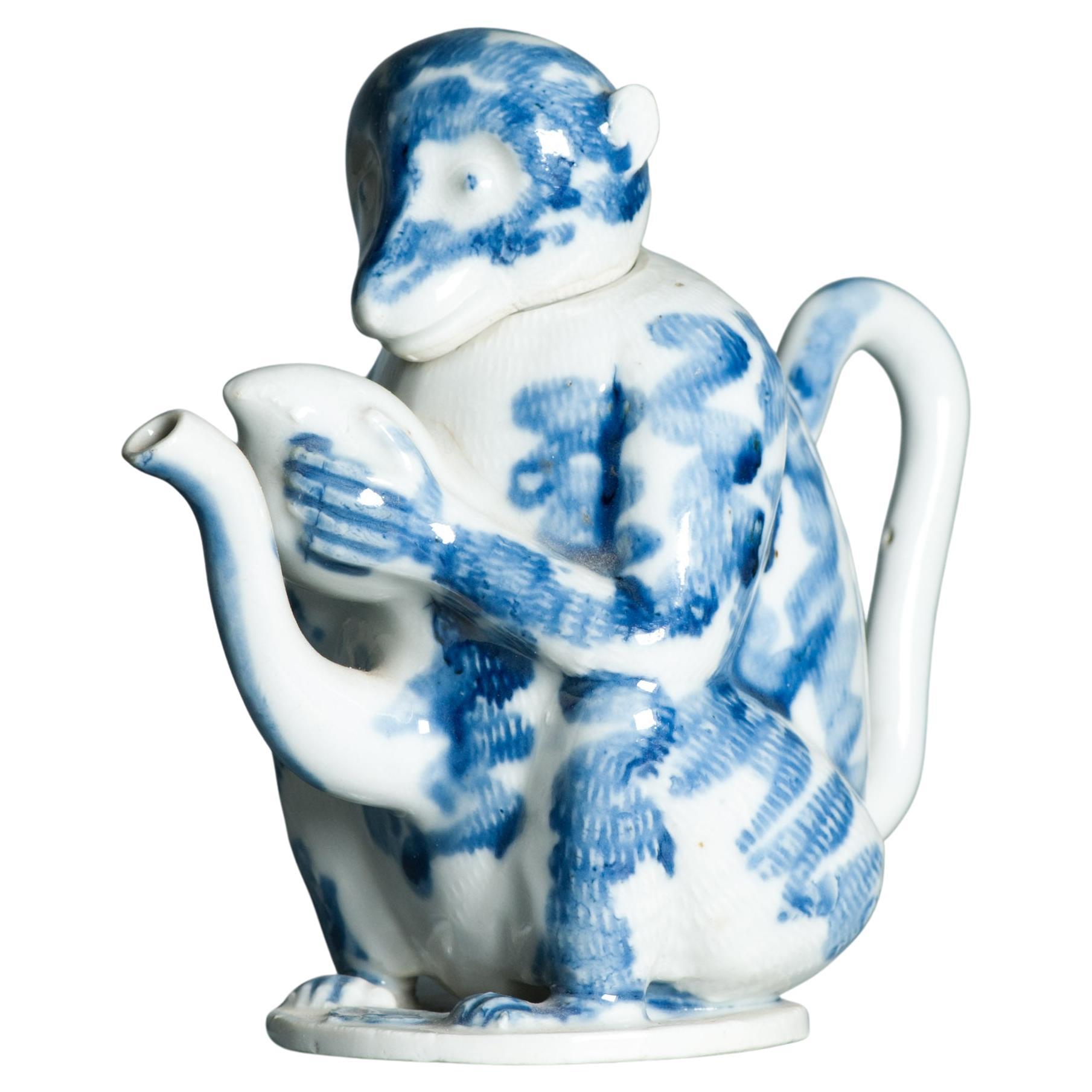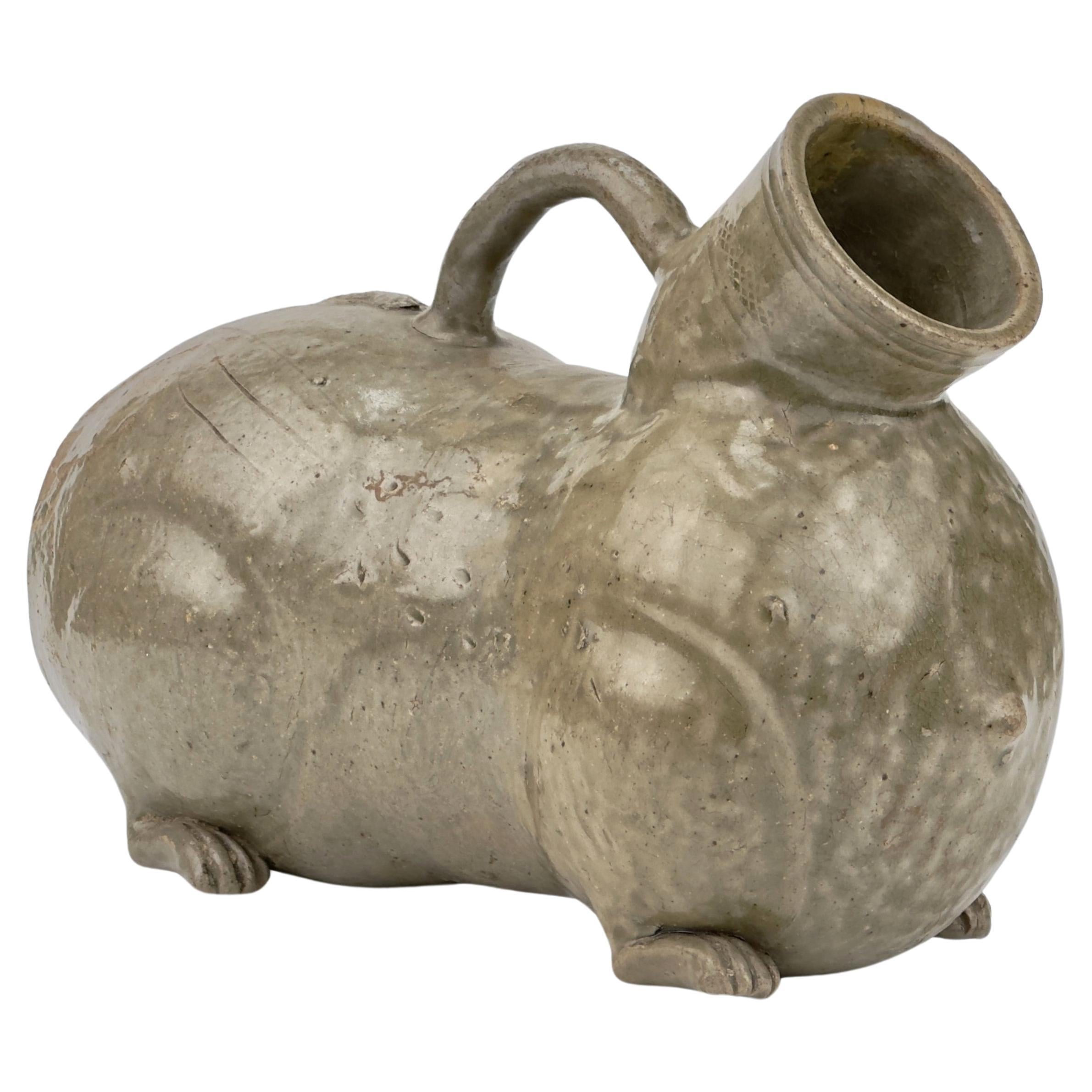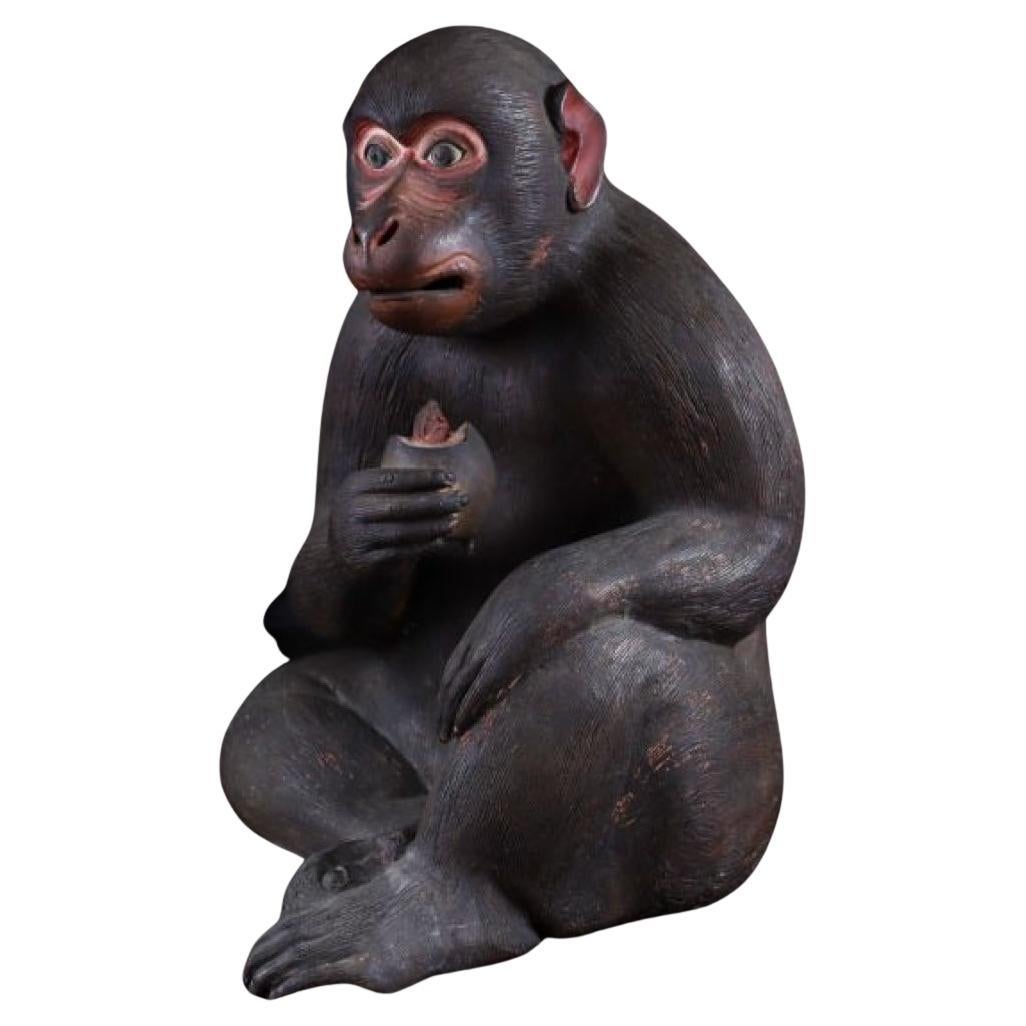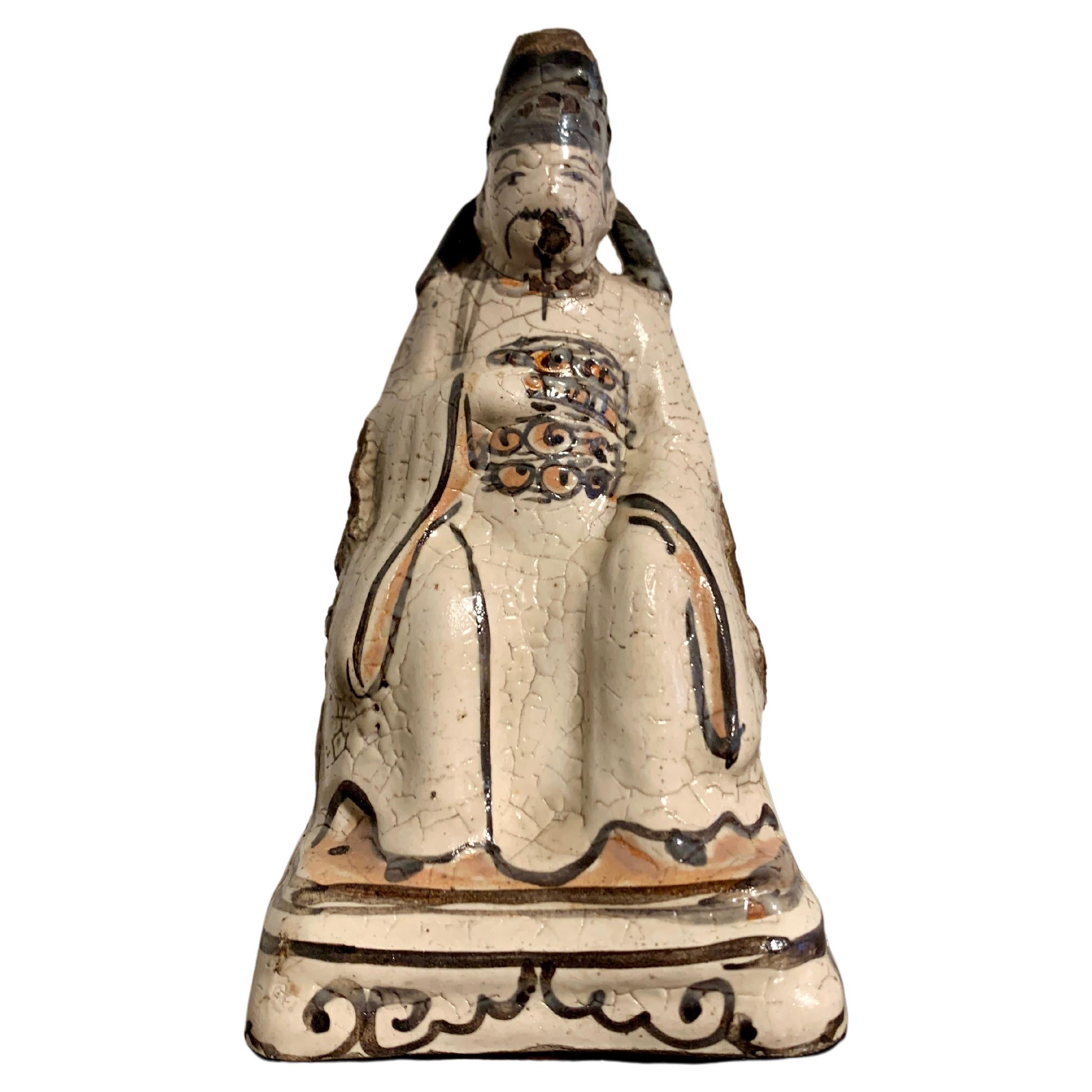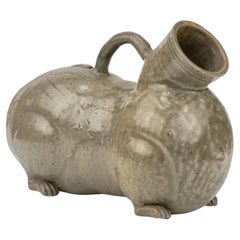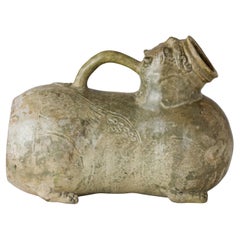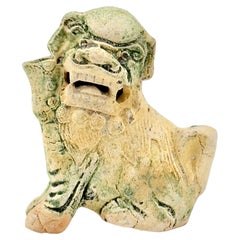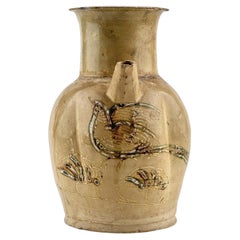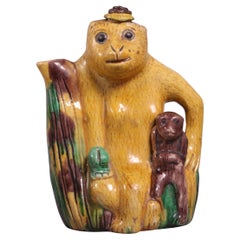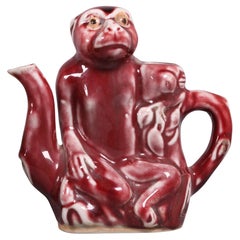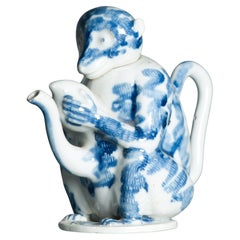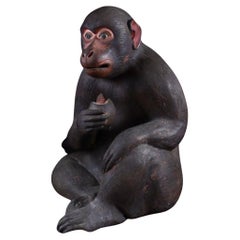Items Similar to Very Rare Ewer of a Seated Monkey, C 1725, Qing Dynasty, Yongzheng Era
Want more images or videos?
Request additional images or videos from the seller
1 of 11
Very Rare Ewer of a Seated Monkey, C 1725, Qing Dynasty, Yongzheng Era
$5,950
£4,519.51
€5,208.01
CA$8,379.07
A$9,289.44
CHF 4,881.96
MX$113,687.54
NOK 60,970.77
SEK 57,227.17
DKK 38,874.55
About the Item
This statue is a representative piece excavated from the Ca Mau shipwreck. It is featured on the cover of the collection book by Dr. Zelnik. Ewer and cover in the form of a seated monkey. With face and hands unglazed, and a short curved spout cupped in his hands, the top knot of his hair forming the cover.
Period : Qing Dynasty, Yongzheng Period
Production Date : C 1725
Made in : Jingdezhen
Destination : Netherland
Found/Acquired : Southeast Asia , South China Sea, Ca Mau ship
Size : 20cm (Height)
Condition : Good
Reference : Double checked with reference to the original catalogues
1) Tau Co Ca Mau(The Ca Mau Shipwreck) Catalogue 2002 / The National Museum of Vietnamese History
2) THE CA MAU SHIPWRECK PORCELAIN : from the Collection of Dr.Zelnik , 2000
3) Sotheby’s Amsterdam, 2007 : Made In Imperial China / Sotheby's
4) Asian Ceramic Found along Maritime Silk Route / National Maritime Museum of Korea
* The Ca Mau Cargo
The Ca Mau Cargo refers to a Chinese cargo sunken sometime between 1723 and 1735 off the coast of Vietnam’s farthest point in the South China Sea, discovered by Vietnamese fishermen in 1998. It is believed the ship was a Chinese merchant’s cargo on its way from Canton (Guangzhou) to Batavia when it caught fire and sank. The merchant had ordered the goods on board for Dutch traders, who had limited access to China and its ports.
* Porcelain for the European Market
The Ca Mau Cargo consisted of numerous types of porcelain, chinaware and blue and white wares, all designed for the European market. Blue and white ceramics recovered from the cargo appear decorated with the so-called ‘Scheveningen landscape’, also known as ‘Deshima décor’. This motif usually depicted a traditional Dutch fishing village, executed in Chinese style. Chinese wares with Western motives were extremely popular and made to order and were known as ‘China de commande’.
- Dimensions:Height: 7.88 in (20 cm)Diameter: 3.94 in (10 cm)
- Style:Qing (Of the Period)
- Materials and Techniques:Ceramic,Unglazed
- Place of Origin:
- Period:1720-1729
- Date of Manufacture:1725
- Condition:Wear consistent with age and use.
- Seller Location:seoul, KR
- Reference Number:1stDibs: LU9577238470892
About the Seller
4.8
Gold Seller
Premium sellers maintaining a 4.3+ rating and 24-hour response times
Established in 1999
1stDibs seller since 2023
39 sales on 1stDibs
Typical response time: 4 hours
- ShippingRetrieving quote...Shipping from: seoul, Korea South
- Return Policy
Authenticity Guarantee
In the unlikely event there’s an issue with an item’s authenticity, contact us within 1 year for a full refund. DetailsMoney-Back Guarantee
If your item is not as described, is damaged in transit, or does not arrive, contact us within 7 days for a full refund. Details24-Hour Cancellation
You have a 24-hour grace period in which to reconsider your purchase, with no questions asked.Vetted Professional Sellers
Our world-class sellers must adhere to strict standards for service and quality, maintaining the integrity of our listings.Price-Match Guarantee
If you find that a seller listed the same item for a lower price elsewhere, we’ll match it.Trusted Global Delivery
Our best-in-class carrier network provides specialized shipping options worldwide, including custom delivery.More From This Seller
View AllRare Yue Celadon-Glazed Figural Vessel, Western Jin dynasty (265-420)
Located in seoul, KR
This vessel is well-modeled as a recumbent winged lion with detailed decorative elements. It features a grimacing face with large protruberant eyes under heavy brows and a gaping mou...
Category
Antique 15th Century and Earlier Hong Kong Han Antiquities
Materials
Celadon
A Rare Yue Celadon-Glazed Figural Vessel, Western Jin dynasty (265-420)
Located in seoul, KR
This vessel is well-modeled as a recumbent winged lion with detailed decorative elements. It features a grimacing face with large protruberant eyes under heavy brows and a gaping mouth, which forms a large aperture. The piece has a tail that arches to form a loop handle, and the wings are incised on the sides. The whole piece is finished with a thin olive-green glaze.
This kind of figural vessel dates back to at least the Western Han dynasty, with the design fully developed in the Yue kilns of Zhejiang province during the 3rd and 4th centuries. Such zoomorphic forms became popular among the literati and were transformed into various functional objects like wine ewers and water pots.
There is a pair, and you can check it in the uploaded list. If you would like to purchase two in pairs, please leave a message.
Period : Western Jin Dynasty (266 - 316 AD)
Type : Figural vessel
Medium : Yue celadon(Stoneware)
Provenance : The piece was acquired in Hong Kong in late 1990s.
Reference :
1) Sotheby's New York 17 March 2015 - Chinese Art Through The Eye Of Sakamoto Gorō – Ceramics Lot 33
(Price Range : 15,000 USD-20,000 USD / Type : Highly related)
2) Sotheby's London 17 May 2023 - A Journey Through China's History. The Dr Wou Kiuan Collection Online. Part I - Lot 30
(Price realised : 13,970 GBP / Type : Closely related)
3) Ethnological Museum, Berlin, Germany - Pouring vessel in animal shape, China, Yue kilns, Zhejiang province, late Western or early Eastern Jin dynasty, 4th century
4) Sotheby's London 16 May 2018 - Important Chinese Art Lot 68
(Price realised : 50,000 GBP / Type : Closely related)
5) The MET - Accession Number: 1985.207 - Vessel in the Shape of a Tiger (Huzi)
(Type : Closely related)
* Yue Celadon
Yue celadon, also known as Yue ware, is a type of Chinese pottery with a celadon glaze, originating from the eastern Han dynasty in the Zhejiang province. The name 'Yue' comes from the Yue kilns which were among the earliest to develop the celadon technique. Yue ware is known for its jade-like glaze, which can range in color from bluish-green to olive green.
Yue celadon was highly regarded during its time and was the first Chinese ware...
Category
Antique 15th Century and Earlier Hong Kong Chinese Export Antiquities
Materials
Celadon
Haitai Figurine from Ca Mau Ship circa 1725, Qing Dynasty, Yongzheng Era
Located in seoul, KR
The green-glazed beasts seated on their haunches, a short spout beside their turned heads, their mane and tail splashed with yellow or brown glaze
Period : Qing Dynasty, Yongzheng P...
Category
Antique 1720s Vietnamese Chinoiserie Antiquities
Materials
Pottery
Changsha ewer, Tang Dynasty(618-907)
Located in seoul, KR
Changsha Ware has distinct and recognizable designs and motifs. Painted designs often depict flowers, vines, clouds and mountain landscapes. Some painting is simply splotches of colo...
Category
Antique 15th Century and Earlier Hong Kong Tang Antiquities
Materials
Stoneware
Changsha ewer, Tang Dynasty(618-907)
Located in seoul, KR
Changsha Ware has distinct and recognizable designs and motifs. Painted designs often depict flowers, vines, clouds and mountain landscapes. Some painting is simply splotches of colo...
Category
Antique 15th Century and Earlier Hong Kong Tang Antiquities
Materials
Stoneware
Guardian Official Pottery Figure
Located in seoul, KR
This figure appears to be a terracotta statuette, possibly representing a court official or a deity given the distinct headgear which could signify a rank or divine attribute. The style of the figurine, with its facial features and remnants of paint, suggests it could be a part of funerary art, which was common in Chinese culture during these periods.
Date : Northern Wei...
Category
Antique 15th Century and Earlier Hong Kong Tang Antiquities
Materials
Earthenware, Pottery
You May Also Like
Chinese Monkey Form Porcelain Teapot, 19th Century
Located in New York, NY
yellow, brown, and green glazed mother monkey holding her baby
Category
Antique Late 19th Century Chinese Antiquities
Materials
Porcelain
Chinese Monkey Form Porcelain Teapot, 19th Century
Located in New York, NY
red glazed teapot in the form of a sitting monkey
Category
Antique Late 19th Century Chinese Antiquities
Materials
Porcelain
Antique Edo/Meiji Period 18/19C Japanese Hirado Teapot Sitting monkey
Located in Amsterdam, Noord Holland
This is a most unusually made antique Hirado porcelain cachepot with playing boys. Crisply modelled with cobalt blue glaze
About Hirado 平戸 Ware
The origins of Hirado ware (it's als...
Category
Antique 19th Century Edo Ceramics
Materials
Porcelain
Rare Edo Period traditional Dojin-yaki finely Carved Monkey Figurine
Located in Fukuoka, JP
This exceptional Edo-period sculpture depicts a seated monkey in an incredibly lifelike manner, with finely carved details and expressive features. Made using traditional Dojin-yaki ...
Category
Antique 18th Century Japanese Edo Sculptures and Carvings
Materials
Clay
Chinese Small Cizhou Glazed Figure of a Daoist Deity, Song to Ming Dynasty
Located in Austin, TX
A small and charming Chinese cizhou ware glazed pottery figure of a Taoist deity or official, Song to Ming Dynasty, 13th - 15th century, China, ex. Christi...
Category
Antique 15th Century and Earlier Chinese Ming Sculptures and Carvings
Materials
Stoneware
Japanese Statue Bizen Pottery Monkey by Koyama Isso, 20th Century
Located in Amsterdam, Noord Holland
1932- bizen pottery of a sitting Monkey. Marked at the back.
Real name is Mitsuo. Eldest son of Koyama Gengo, pen name is Koyama Isso. Worked for a local brickmaking company but lat...
Category
20th Century Japanese Edo Animal Sculptures
Materials
Porcelain
